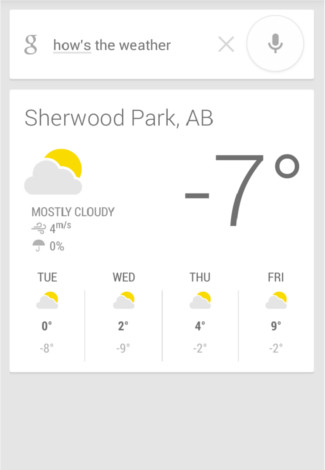Personalized Search: A Look From Where We Came
There’s an essential tool out there that we all use and take for granted. Search. I mean you would think that it’s not that difficult to enable search. You just tell the computer to look for matches to whatever you’re describing. Unfortunately in the world of search engines it’s not that easy, because as you search for one thing you discover that when taken out of context it can mean a very different thing. And the other problem is that naturally computers don’t understand context. Each company is competing to give you the most accurate results possible and let’s be honest the search engine of 2013 is leagues ahead of where it was. I mean, Google’s core business comes from search and considering they made almost 13 billion last quarter, I think they know what they are doing. Now the problem with search back in the day was that it was mainly based on keywords and so things like context were often overlooked. But, within the last 2 years there have been a few key changes that Google has made that have dramatically changed and improved how results appear. Welcome to the personalized web.
Google Goes Social
Now a little bit of history on how Google (finally) became social. Google has long been king of the hill in terms of search with not too much to worry from competitors. They also enjoy trying out new products and seeing what people like. They even launched Orkut (their first social network) in 2004, about a week ahead of Facebook. You can obviously figure out which platform won in the end. With the advent of Facebook, people didn’t just want search results anymore, they wanted recommendations. From their friends. Now. So Google reacted and built a social platform called Wave. Heard of it? Didn’t think so. If you want see where most of its parts ended up look at the live editing features in Google Docs. Wave was a live blogging platform. And to be perfectly honest it didn’t provide an sort of search integration. At all. So it died, simply because it was such a mash up of random things that people didn’t need. So Google tried again launching a platform that integrated deeply with Gmail and other services. Nope not Google+. Google Buzz. And guess what? That didn’t go over so well either. Not until the heads of Google made their employees bonuses depend on the success of a social product that in 2011 did the Google gurus finally show a product that really did what the social web needed.

Google Semantic Search – The Knowledge Graph
Another key segment of all the personalized results we see now is semantic search or the idea that by grabbing info from multiple sources and providing context to the query allows greater accuracy in your results. Now knowledge graph is far too complex to just explain so I’ll just show you. Think about searching for your favorite band. Here I’ve gone ahead and done a search for Paramore, and by crawling the web not only does Google provide the most relevant results like their website, but on the side they also know what songs they play and even when their nextconcerts are and everything.
As a fan this is very useful. You can also see that it’s grabbing info from trusted sources as well. The interesting thing is that this was all released after Google+ had happened. So now you’re getting contextual recommendations, along with recommendations from your friends. You got to think that that would give you some pretty accurate results. Now there is a second story to all of this. Or should I say a second screen. Behind the shiny new toy that is Google Now, Androids personal assistant, lies this knowledge graph and a powerful voice analyzer that allows you to word simple phrases such as “How’s the Weather?” and Google will know that you probably want the weather for where you are currently. Without knowledge graph Google Now would not be nearly as smart as it is now.
All these things make what Google is today. And today Google is mobile. We are seeing a huge trend as people move more to on the go devices, companies are doing the same. And with companies like Google trying to guess what you are going to do next, things can only get better. Google is integrated into practically every phone on the planet, and they know not only what you want to know, but when you want to know it. Without the advent of Google+ and the Knowledge Graph these developments would be impossible.
.jpg)
